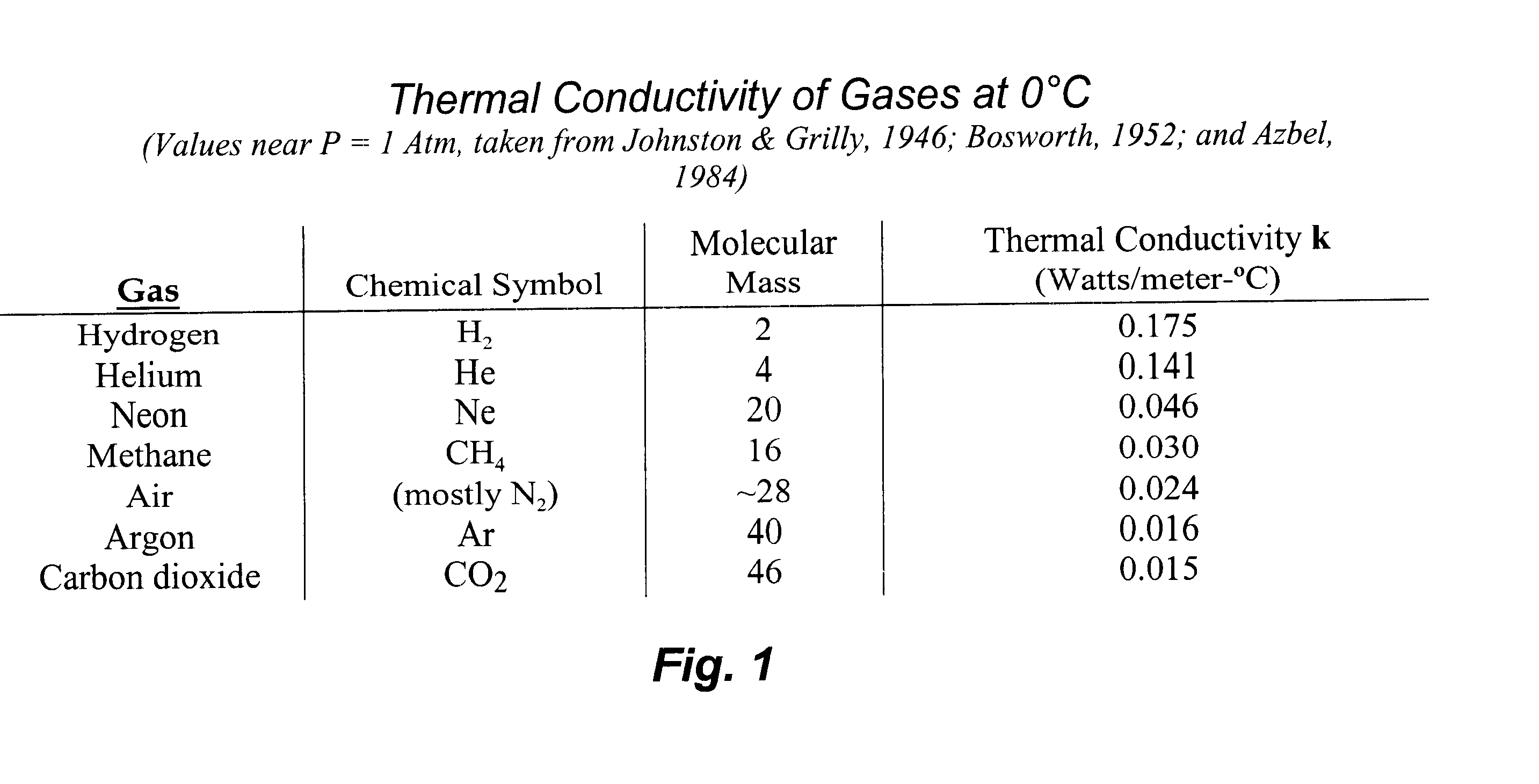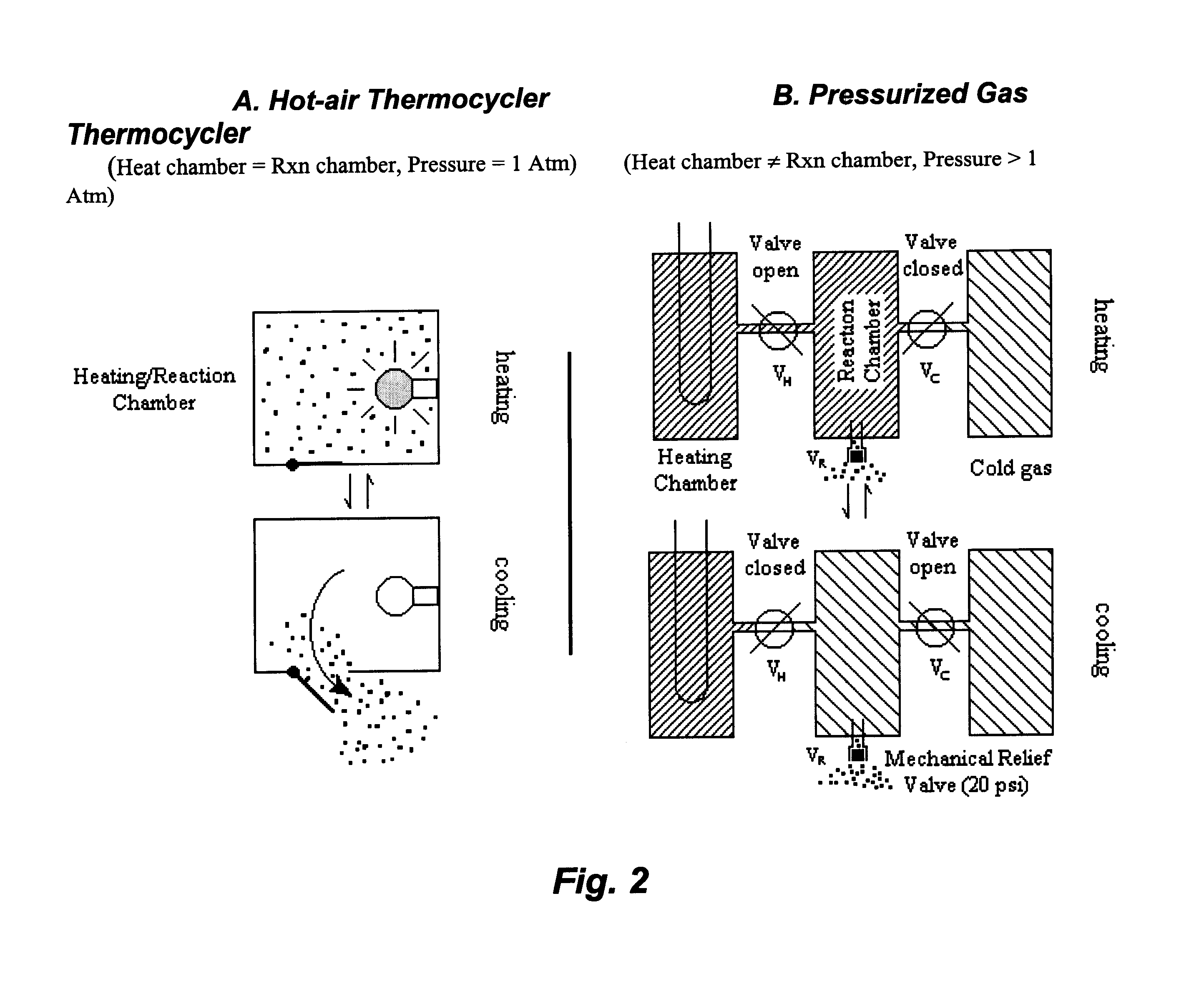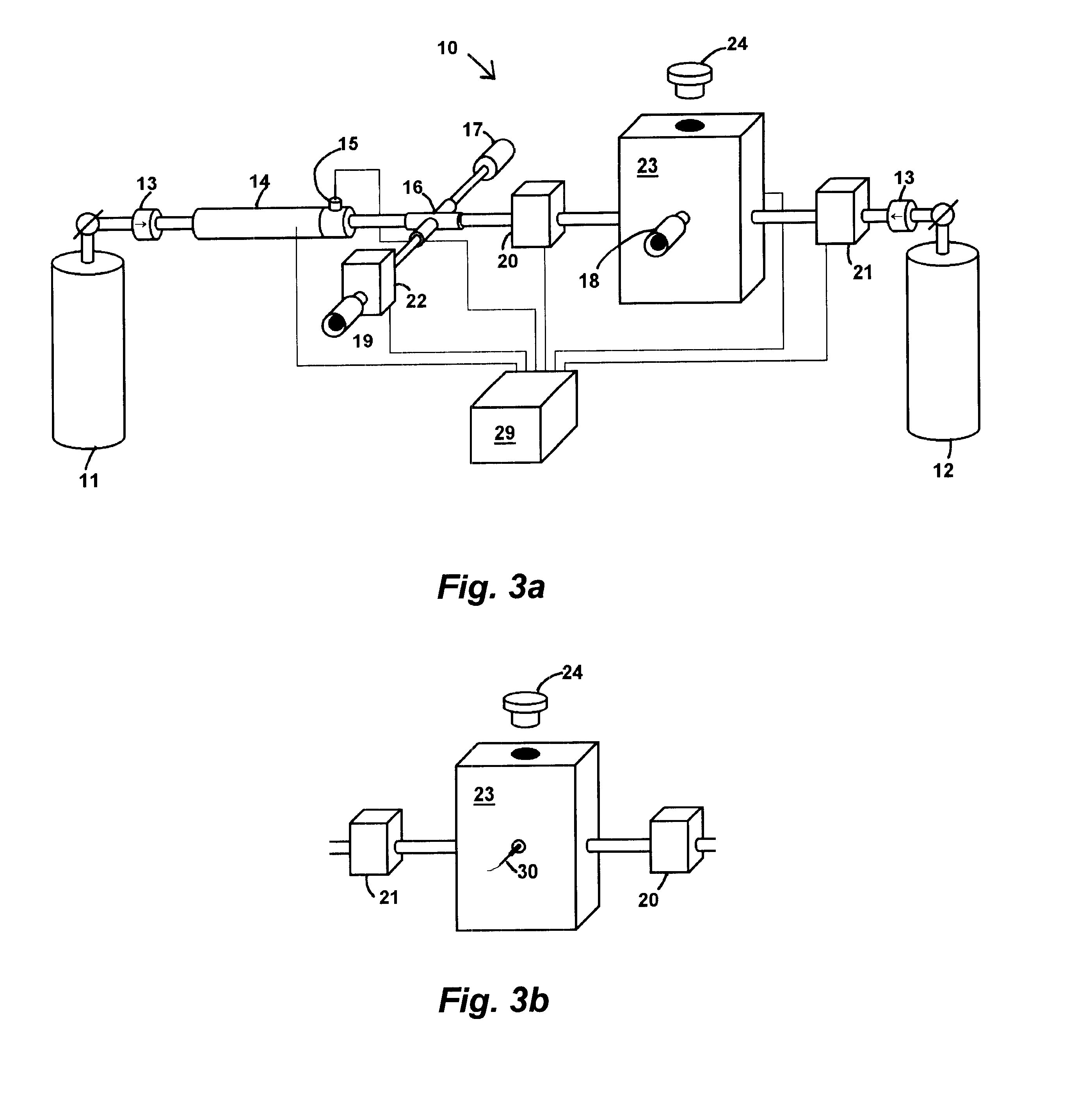High speed process and apparatus for amplifying DNA
- Summary
- Abstract
- Description
- Claims
- Application Information
AI Technical Summary
Benefits of technology
Problems solved by technology
Method used
Image
Examples
example 2
Software Refinements, 30 Gas Phase PCR Cycles in 2:48 (168 seconds)
At this point, it was clear that the tri-valve apparatus was a functional therrnocycler. Not only was it very fast, but it exhibited good thermal control (.+-.1.degree. C.). However, its performance was limited by its software, which was written in BASIC code. Every time it needed to execute commands in response to thermal changes in the reaction chamber or heat pipe, it needed to translate from BASIC (interpreted program) to assembly code (compiled program).
A substantial amount of time (.about.1 sec / cycle) was lost due to this software limitation. In particular, during 30 cycles of gas phase PCR amplification, over 30 seconds of time were nonproductively lost. Consequently, the system control software was re-written in assembly code for faster operation. This modification resulted in much faster gas phase PCR, as shown in FIG. 6.
Thirty cycles of [0 sec 92.degree. C. / 1 sec 55.degree. C. / 1 sec 72.degree. C.] were carr...
example 3
30 Gas Phase PCR Cycles in 1:53 (113 Seconds)
Even faster gas phase PCR amplification was achieved using short (<100 b.p.) amplicons. At a Taq Polymerase elongation rate of .gtoreq.80 nucleotides / sec, it was expected that .about.1 sec / cycle spent during the transitions A-E+E-D (FIG. 4a) would be more than sufficient to copy a short 85 b.p. DNA template using a 30 mer PCR primer (T.sub.m.about.65.degree. C.). Accordingly, experiments were carried out with pressurized air heating / CO.sub.2 cooling, using a relatively short (85 b.p.) amplicon from the E.coli O157:H7 Stx verotoxin gene.
Gas phase PCR reactions (10 .mu.l) were carried out with 36 p.s.i. of pressurized air and CO.sub.2 cooling in thin-walled glass capillary tubes containing 50 mM Tris (pH 8.5 at 25.degree. C.), 250 .mu.g / ml BSA, 3 mM MgCl.sub.2, 0.2 mM dNTPs, 50 pmol of forward and reverse primers, 20 picograms of template E.coli O157:H7 DNA, and 5 U of Taq Polymerase (Promega). After 30 cycles of amplification, DNAs were se...
example 4
30 Helium Gas Phase PCR Cycles in 1:18 (78 Seconds)
A small (85 b.p.) amplicon from the E.coli O157:H7 Stx gene was PCR-amplified using "hot" pressurized helium gas and CO.sub.2 cooling. In order to further reduce the thermocycling time, primer lengths were increased to 30 mers, so that higher annealing temperatures (62.degree. C. to 63.degree. C.) could be employed. In addition, the DNA denaturation temperatures were slightly reduced (86.degree. C. to 89.degree. C.) from those used in previous experiments.
Three different high-speed gas phase thermocycling protocols were employed: (a) [0 sec 89.degree. C. / 0 sec 62.degree. C. / 0 sec 72.degree. C.]; (b) [0 sec 87.degree. C. / 0 sec 62.degree. C. / 0 sec 72.degree. C.]; and (c) [0 sec 86.degree. C. / 0 sec 63.degree. C. / 0 sec 72.degree. C.]. PCR reactions (10 .mu.l) were carried out in thin-walled glass capillary tubes containing 50 mM Tris (pH 8.5 at 25.degree. C.), 250 .mu.g / ml BSA, 3 mM MgCl.sub.2, 0.2 mM dNTPs, 50 pmol of forward and rever...
PUM
| Property | Measurement | Unit |
|---|---|---|
| Pressure | aaaaa | aaaaa |
| Pressure | aaaaa | aaaaa |
| Pressure | aaaaa | aaaaa |
Abstract
Description
Claims
Application Information
 Login to View More
Login to View More - R&D
- Intellectual Property
- Life Sciences
- Materials
- Tech Scout
- Unparalleled Data Quality
- Higher Quality Content
- 60% Fewer Hallucinations
Browse by: Latest US Patents, China's latest patents, Technical Efficacy Thesaurus, Application Domain, Technology Topic, Popular Technical Reports.
© 2025 PatSnap. All rights reserved.Legal|Privacy policy|Modern Slavery Act Transparency Statement|Sitemap|About US| Contact US: help@patsnap.com



